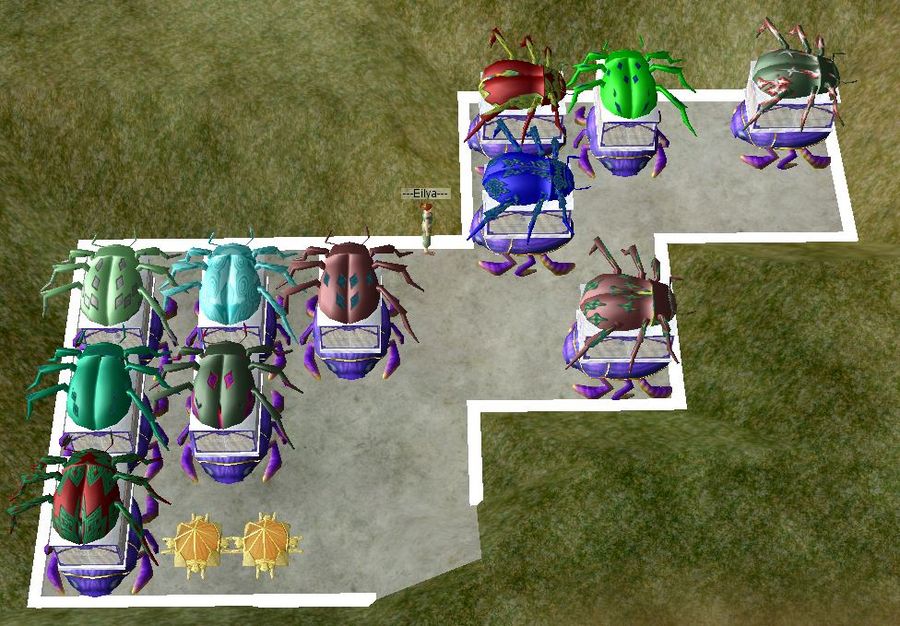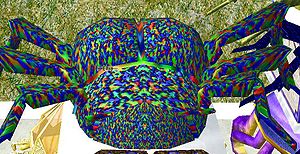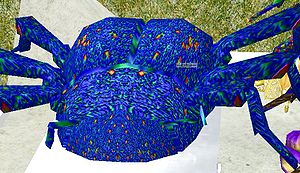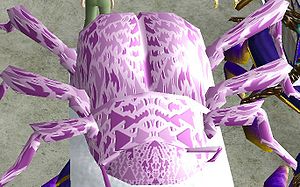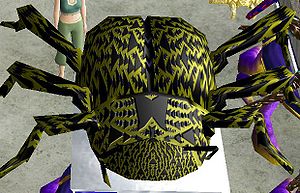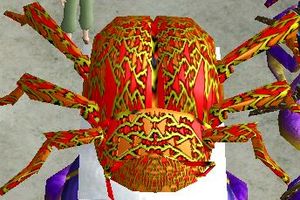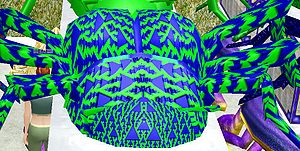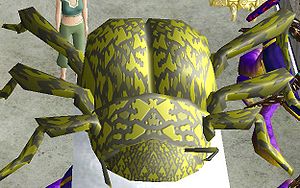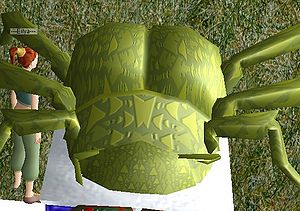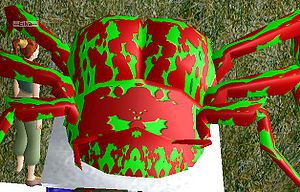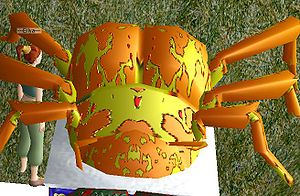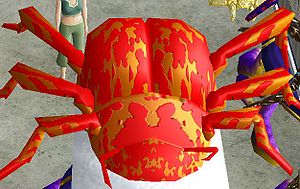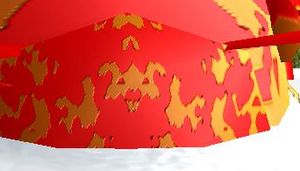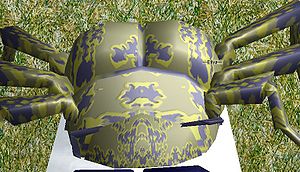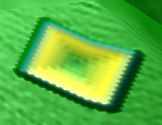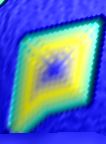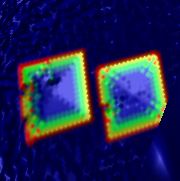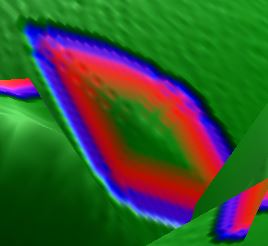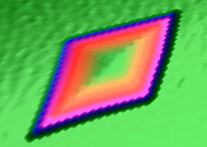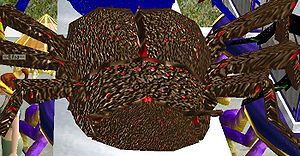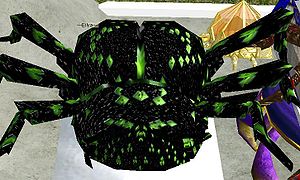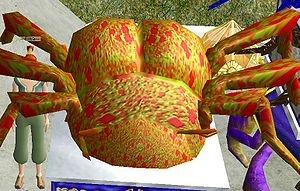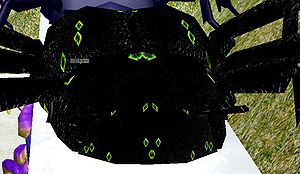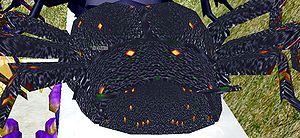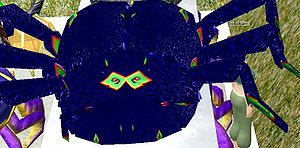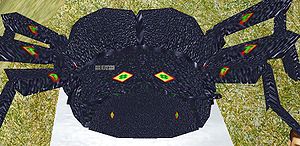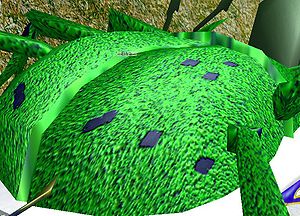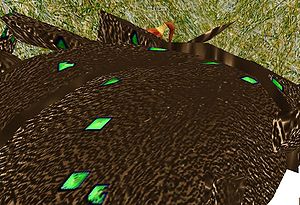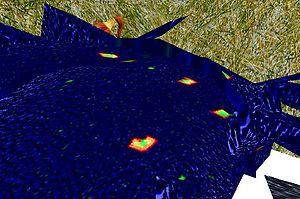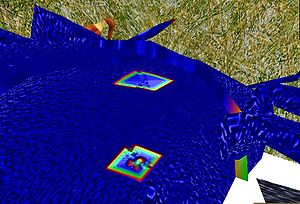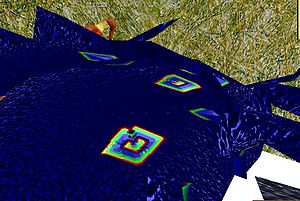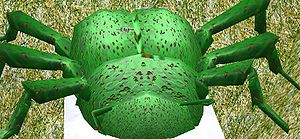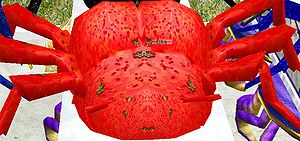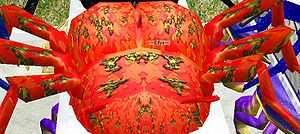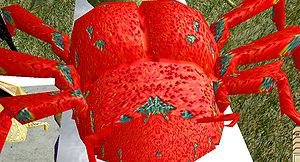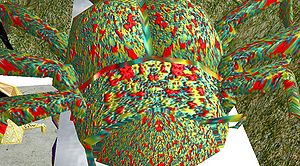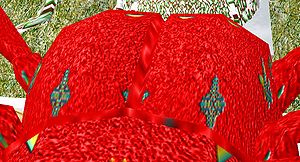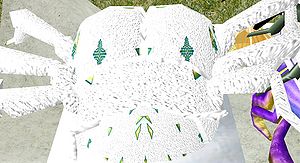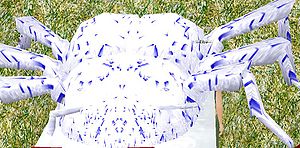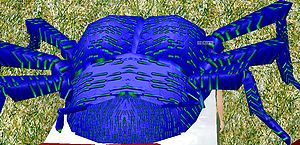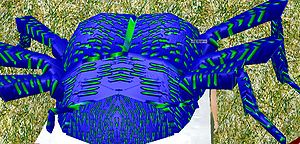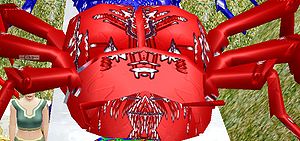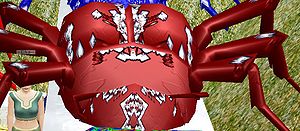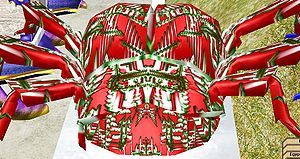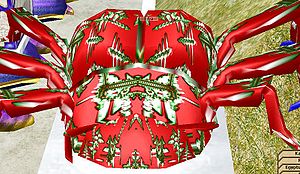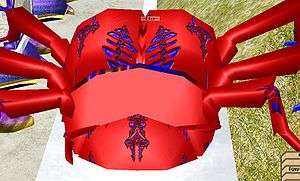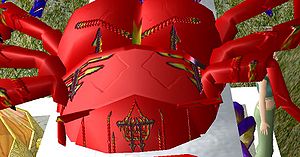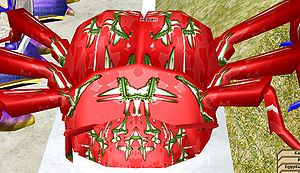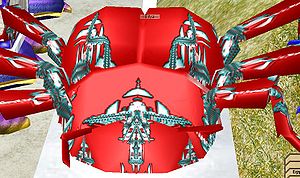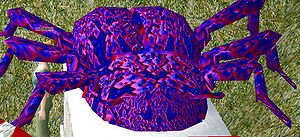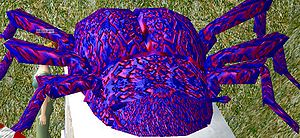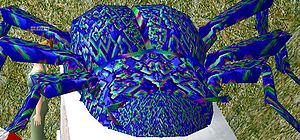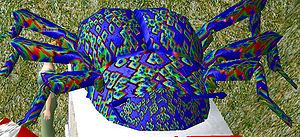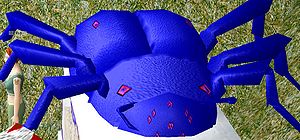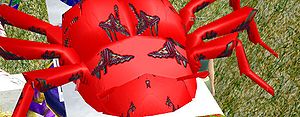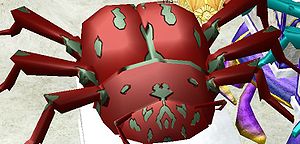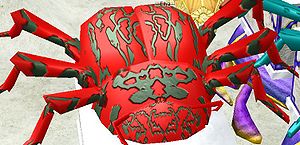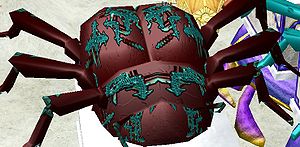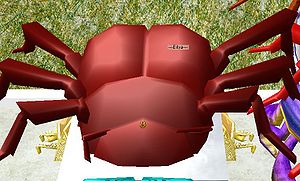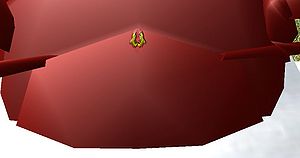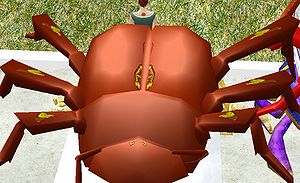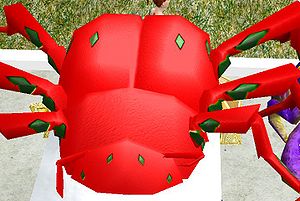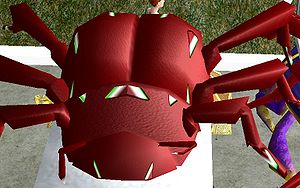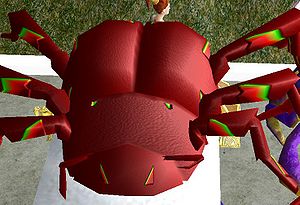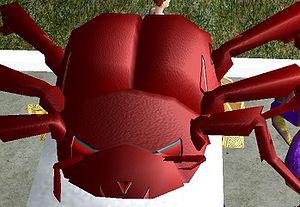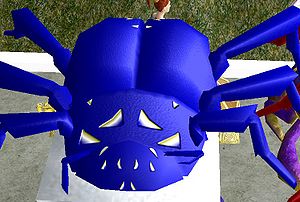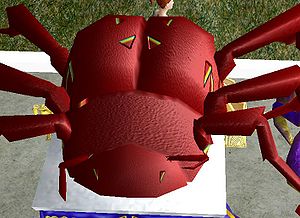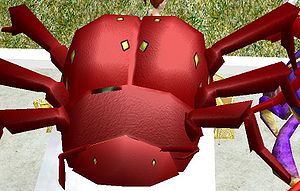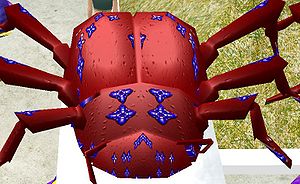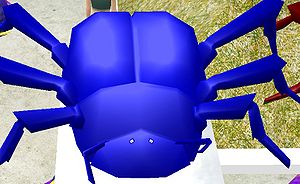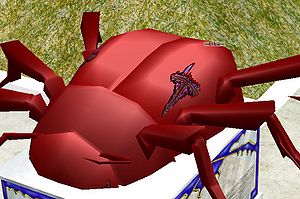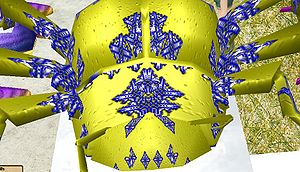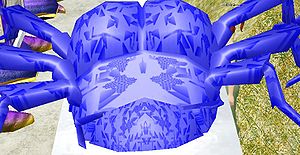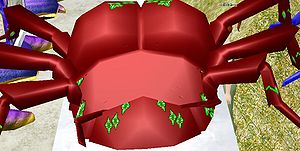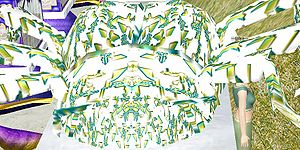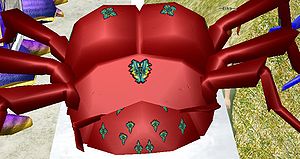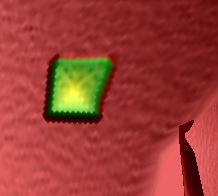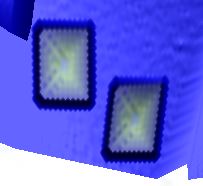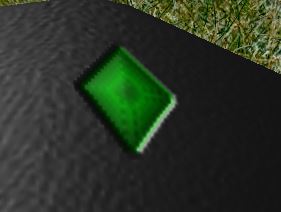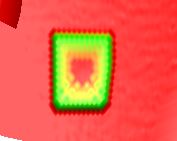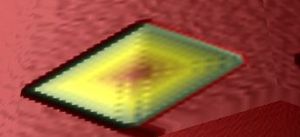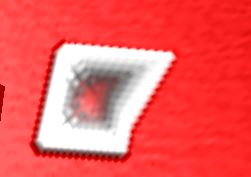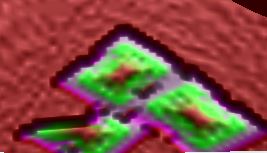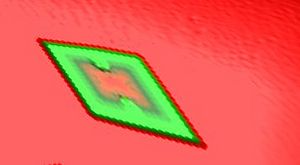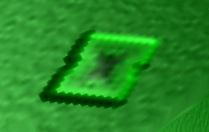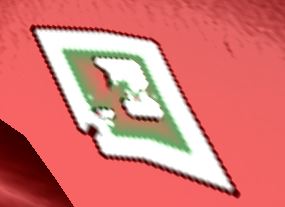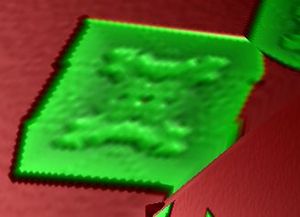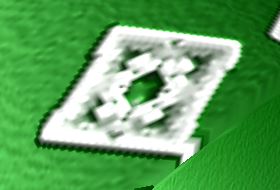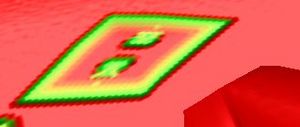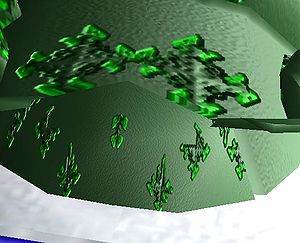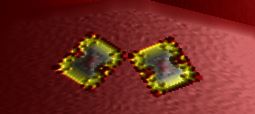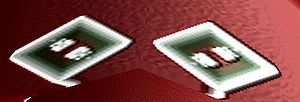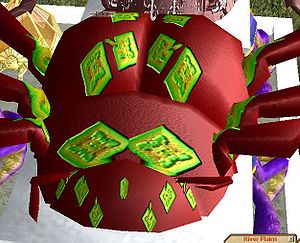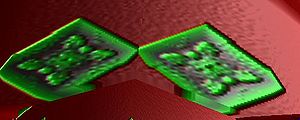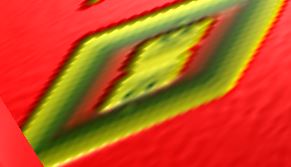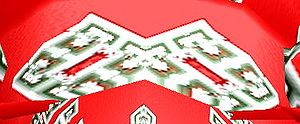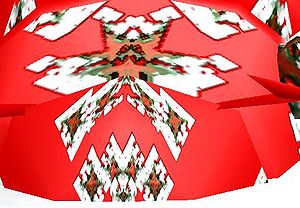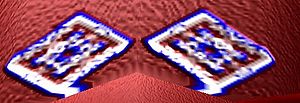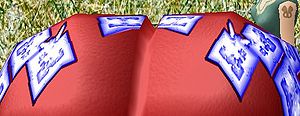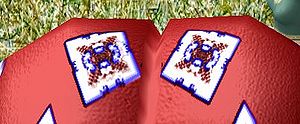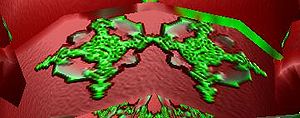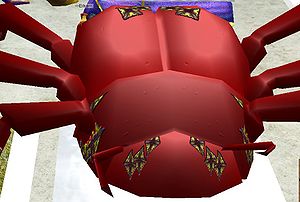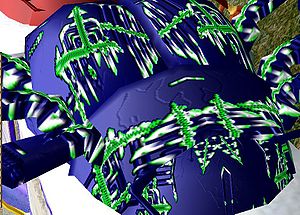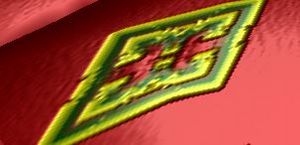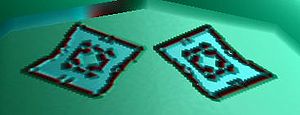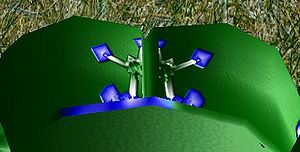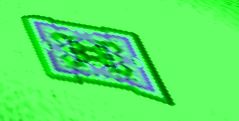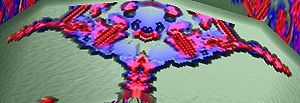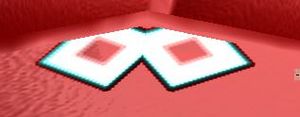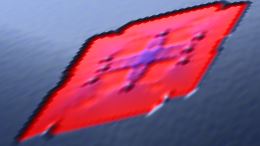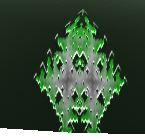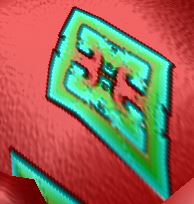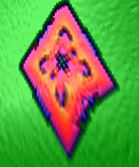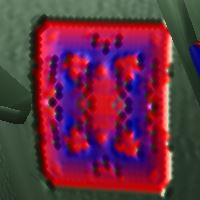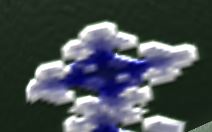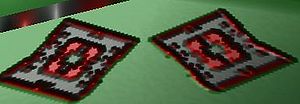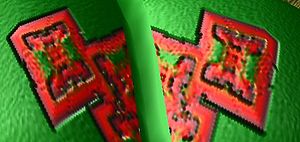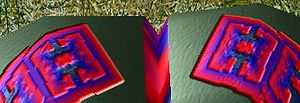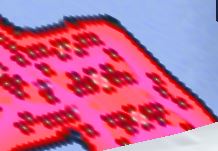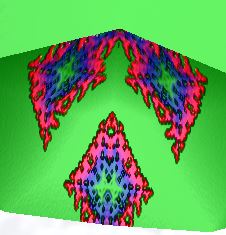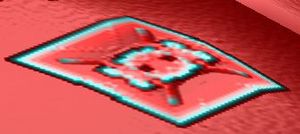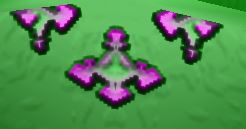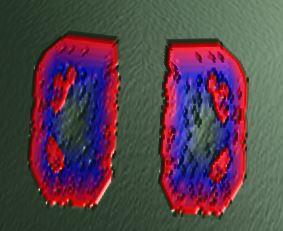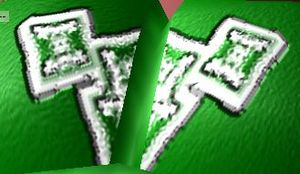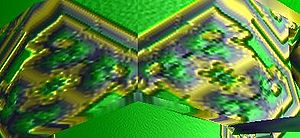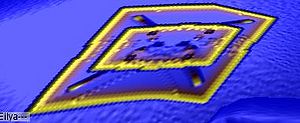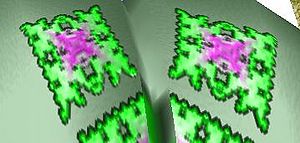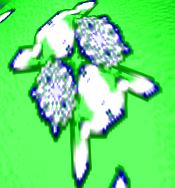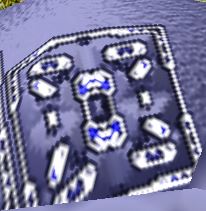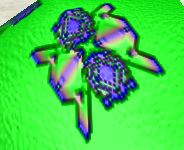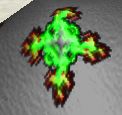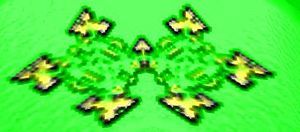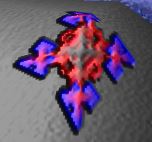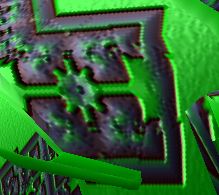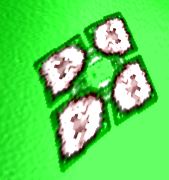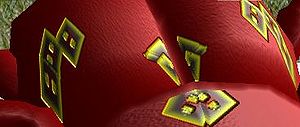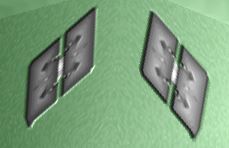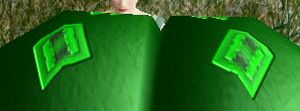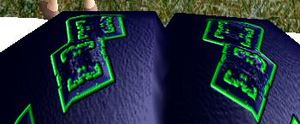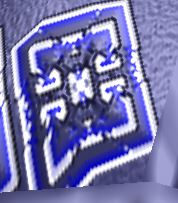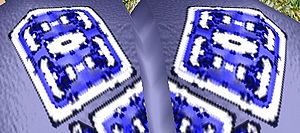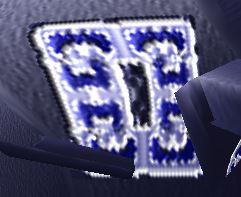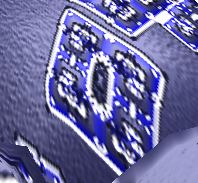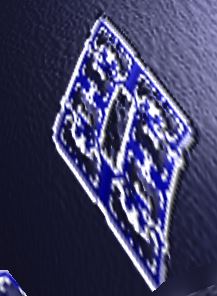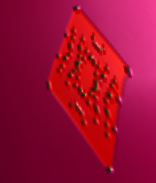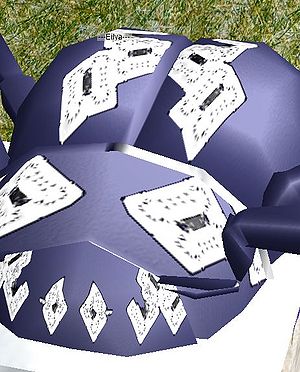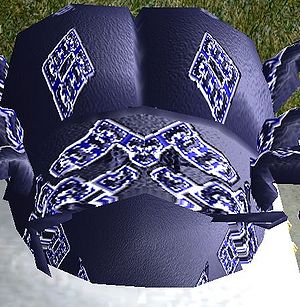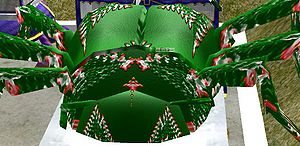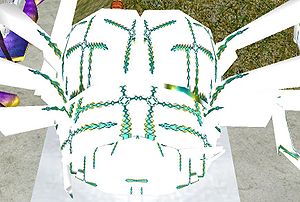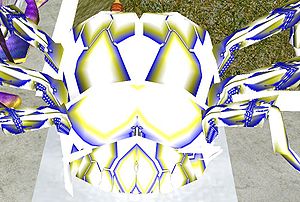The Wiki for Tale 6 is in read-only mode and is available for archival and reference purposes only. Please visit the current Tale 11 Wiki in the meantime.
If you have any issues with this Wiki, please post in #wiki-editing on Discord or contact Brad in-game.
User:Eilya/BeetleBreedingThoughts
Eilya's Thoughts on Beetle Breeding
EDIT: This started out as a linear blog, but as my understanding has developed I needed to go back and forth over the content and sometimes changed the order of presentation. I could edit out some of the earlier content to make it more presentable, but I think something of the story is lost if I do, and other breeders will find it harder to see what point they are at in their own story. I have decided to leave the old content in situ, so please bear with me if the odd time-warp appears!
I started my beetle breeding from scratch with a few wild beetles (one of each of Burrowing, Speckled and Plains). I also added some wild beetles from my alt Iril, and we both worked the tanks for a while, so my beetles are the product of two avatars. I don't know to what extent this has affected my results.
The long-standing guide says to setup MPT (Male Pattern Tank - 2F, 9M) and FPT (Female Pattern Tank - 2M, 9F) but doesn't really say WHY. I read it lots of times trying to see what it was getting at, and in the end decided to just do my own thing. From experience I think the WHY is the following:
1) A ratio of greater than 4:1 gives a high likelihood of breeding talking place by the pair of males or females you are using.
2) With only 2M or 2F in one tank it is easier to see what breeding takes place.
EDIT: I later also found that having a 1:1 ratio of M:F sometimes led to explosive growth, which meant you come back several hours later to 30 beetles that have all gone in completely the wrong direction, and you've lost your initial pattern.
I still haven't decided why they go for 9 plain colour etc, as I have not yet seen a truly plain colour, everything I have has a subtle pattern underneath, even if it is the same colour, and this affects the outcome. Maybe this will come later on as my beetles designs become purer. For this reason I found it better to work with a mix of males and females of the same pattern - UNLESS I was trying specifically to move a pattern onto one colour.
EDIT: Much later, once I was breeding Crosses and advanced Diamond motifs I started to get some plain colours completely out of the blue. They were odd pastel shades or slightly luminescent, and clearly different from the early ones which had patterns hidden. I created all female and all male tanks of these and was then able to get good transfer of patterns. I think this is because these plains were well mutated within their DNA.
My approach to breeding has been to have 10+ beetles in a tank of similar pattern and try to "push" the pattern in the direction I wanted. The way I did this was to cull/remove any new beetle that didn't go towards the pattern I wanted. Selective breeding so to speak.
Things I have seen are documented below.
Ownership
Any wild beetle is "not owned". When you place a beetle in a Terrarium it will change to 100% Owned (by you), anyone else viewing that beetle will see it as 0% Owned (by them).
A 100% owned male and a 100% owned female will ALWAYS produce a 100% owned offspring. This means it is impossible to progress in principles without obtaining a beetle that has been in another players Terrarium, as you will only breed low % beetles by breeding with their beetle, which will start off as 0% owned (by you).
I also suspect that ownership plays a part in speed of mutation, as I have observed beetles with ownership in the 90's mutating less (ie having a stronger tendency to produce similar offspring, or even almost perfect copies). If this is the case it will be helpful when trying to perfect a nice pattern, as at that stage you want the pattern to be relatively stable. Elsewhere I have read that "certain patterns are resistant to mutation", so it could merely be that my >90% beetles that mutate slowly were of these strains, if I see any more evidence I will write further about this.
Clearing
With early beetles (and I also suspect with some of the chaotic muddles that emerge later on) there is a layer of "crud" over the beetle sometimes. In very early breeds I often got a layer of black horrible "skin" striated across the beetle. Successive generations had less and less of this crud until it finally disappeared altogether, or mutated into a nice vivid colour. This appears to be some sort of "clearing" of the genetic material. Odd types of crud re-appear later on after a nice pattern has mutated and I suspect this will also clear, but do not know for sure yet.
I have also noticed that an early mutation into 6 or 7 colours spread all over a beetle, will often slowly change into a 2 or 3 colour beetle, with a distinct motif (such as a Diamond) containing the remaining colours. In other words the distinct motif is somehow spread across the rest of the beetle and distorted, making it hard to see that there is any pattern. You can also see this in reverse when a distinct motif starts to break up, or has so many instances of the motif, so as to cover the body of the beetle, and starts to distort.
With some offspring it is clear that the pattern and colour are identical, but the viewpoint is merely zoomed in or altered, so in addition to the fractal nature of the patterns that others have posited I would posit an imagined viewpoint and distance from the object, and some kind of physical distortion or wrapping of the object, such as might be seen on a sphere or balloon that has inflated or deflated. This idea and the layering idea help me think about the breeding process in a structured way, rather than everything being entirely random. It could, of course, have absolutely nothing to do with the way things are actually generated...
The pictures of the Mandlebrot fractal at different magnifications in Wikipedia really helped me understand this a bit better: | Wikipedia Fractals Page. As I spent more time trying to breed patterns, particularly Diamond motifs I saw this with very clear motifs that were travelling up and down the continuum of magnification from smooth skinned with sharp, crisp, shaped motif but no colour or texture up to very rough skinned with lots of colour and texture to the motif but little definition. Having seen advanced beetles on display I know that continued breeding will lead to a very focussed motif that is both crisp and has colour.
And a picture to offset the wall of text :)
Mutation
A pattern seems to mutate best when 8 to 10 beetles of a very similar pattern and colour are together, less so when many other different strains are present. Whether this is just more obvious when this is so, or whether it is a genuine rule I don't know. But it is the case.
When a mutation occurs the pattern changes dramatically, may become chaotic, often develops a startlingly different colour, and may even increase the number of colours present.
Sometimes the beetle will mutate directly into a definite design, like a Triangle or Diamond motif, others it will mutate into a choatic strain which contains the motif that will gradually emerge as it breeds. (For instance a dot on an otherwise plain beetle that grows into a diamond shape).
When mutation does not occur the offspring can be clearly seen to be a product of its parents, having a similar pattern, colour or hue as one or both of the parents.
After several generations mutations can sometimes clearly be seen to be throw-backs to previous patterns you have grown. This led me to believe that some kind of genetic history is held on a beetle, although it may be more of a genetic timeline, and the beetle mutates up and down the timeline. We will see...
Below are some examples of mutations and how they transform.
This is a 7 colour mutation that appeared, the beetle next to it is several generations later showing how the colours coalesce and the pattern transforms. This is going to be some kind of Diamond motif, hopefully with an interesting pattern inside the Diamond.
Geometric Shapes
Triangles
Triangles were the first obviously geometric shape I met. It arose first out of a mutation that I was calling "Waspy" which was a vivid pattern of several colours that reminded me of a wasp. This eventually mutated into sets of triangles on a clear plain background. There is still variation in the pattern, how much it "protrudes" from the plain colour below, the ratio of the colours, but several things stood out.
There are 3 layers of colour, sometimes 3 hues of the same colour (ie 3 different greens) and sometime 3 distinct colours that seem to have a relationship to each other (like opposites etc). A plain background and two triangles of different colours is the norm, although they can quite often be very close in hue, so as to become a single colour overall. This led me to see a sort of layering, both of pattern and colour at times.
ZigZags
Triangles are the easiest shape to direct. I found that they tend to either diverge or converge in offspring. If you continually cull the diverging triangles, and leave the converging ones they will become a pattern I call "Lines" where the triangles overlap so much that only lines are left of the shape. Continue with this process and the background colour will actually become the dominant shape, as it forms wide, zigzagging lines. I call this pattern ZigZags, even though large triangles may still be present.
Curls
If you cull the converging triangle and leave the diverging ones they will start to break up and mutate into curly edged shapes, sometimes a bit like cogs, this progresses to very large curly shapes on a plain background, or single colour beetles with a very delicate hint of curls underneath.
I was going to put the last one on show, but sadly he ran away over-night :(
Colour Palette
Diamonds, and indeed all beetles, have a colour palette. At first there will only be one or two colours available at a given level (by level here I am referring to the apparent magnification/roughness of skin, that seems to relate to some kind of level of a pattern). Refining a pattern to a finer level will usually reduce the colour palette available, going from maybe 3 colours to just one colour; with a only slight difference of saturation giving away the pattern.
The colour palette can transfer from one pattern to another through breeding, thus a 4 colour Oval could transfer its palette to a Diamond (I think, I haven't absolutely proven this). The parent's colours can also be combined to produce a different hue, or more luminescense. The palette is most noticeable with Diamonds, as a plain Diamond will develop rings of colour starting at the outermost outline, and moving inwards towards the centre. The colour scheme of this palette will often be seen to pass from plain Diamond to Dominos, or Mazes - which of itself isn't that surprising, as Dominos and Mazes are just increasingly more complex interplays of plain Diamonds, the Domino being an equal merge and the Maze being one Diamond completely overlaying the other/s.
I have never really done any work with colour and video, so please forgive me if I abuse the terminology as I try to describe what I see!
You will read later about my Avatar's lucky colour "Burgundy" - I say Burgundy, but it is actually various shades of a Maroon like colour as Beetles have the full gamut of Hue, Saturation and Lightness, giving rise to many gradations of a particular colour, often on the same beetle. I was at first puzzled when my lucky Burgundy started giving way to lucky Grey, and lucky Cyan. I thought maybe my lucky colour itself had changed, but as I Googled HSL and colour, to try and figure out what was going on, I found that these three colours are actually related [| Encycolorpedia.com] clearly there is far more going on here than I follow, and I will leave it to you to do your own research :)
Here is a series showing the development of the palette on a Diamond pattern:
More Advanced Shapes
Diamonds
I haven't been working with the Diamond motif for as long, and am still working out its vagaries. The Diamond motif appears as a mutation of an advanced Triangle pattern. Whenever it has first appeared for me it has always been with a very rough textured skin and small coloured blobs, which I originally dismissed as throw-backs to a burrowing/speckle cross-breed of some sort. An extended period logged off (24hr) allowed them to transform further and I could see the Diamond motif developing.
I haven't had much luck transferring this motif yet. As you will see below, when I breed it with plainer skins it loses its colour and becomes a very plain shape. However, when I continue to breed it in its "rough" skin it starts to become a much more defined image within the Diamond shape itself. I can make these larger and smaller, and also completely cover the beetle with them, but I have not yet found a way to isolate one Diamond or place it on a nicer background. I am hoping that the rough skin is similar to the crud I found on very early beetles that later "cleared".
I am working on Green/Grey and Red/Blue versions of the Diamond motif at the moment, and will update the blog if I gain any success.
These two images are a few days later showing how the Diamond image sharpens and starts to reveal inner patterns, and also how its colour mutates.
A day or so later I am still struggling to change the rough skin on Diamond patterns. Any attempt to breed it with a smooth skinned beetle leads to a flat single colour diamond that completely lacks "depth" (like the red one above). I am beginning to suspect that I will need to take these smooth beetles with "flat" diamonds and re-mutate them, it is almost as if the diamonds are on a different "layer" that is not as mutated, so it lacks detail.
I am starting to gain better results within the diamond pattern itself, as you can see below.
And I swear the second one got much sharper over several hours AFTER it was born. I didn't think they could change in that way, so I may just have overlooked it, but it is the sharpest image I have got yet, so I don't know how I could. It appears to have sharpened long after it had been named, but this probably speaks more about what happens to you when you start staring at beetles!
After another day I am starting to better understand the way the Diamond mutates and clears. I went back to one of the Diamonds that I bred out with a plainer beetle when trying to get rid of the "rough skin". I said before that I suspected they were on a different, or more plain, level and would need to be re-mutated, and it looks like I was right. Below is the cross-breed pattern, and next to it a mutation of that pattern, which has gone back to the "rough skin" but with a clearer Diamond motif.
I also started to see how pushing the Diamond pattern itself causes a different sort of mutation. It clarifies the image inside the diamond, and at the same time starts to smooth the rough skin. The effect is similar to changing your screen to a higher resolution, so I suspect there is an element of texture resolution being used. This is good news, as it means I don't need to cross-breed the Diamonds to get rid of the "rough skin", it will clarify itself as it mutates. (I now rush back to breed and mutate those vivid red and violet rough skins I thought were useless!)
Crosses
Crosses are another advanced motif that appears as a mutation of both Diamonds and Curls/Ovals. I actually got a very early mutation from Curls pattern that was very resistant to change (as outlined earlier in Exotic Motifs). What I want to show here is the stages of development of a Cross motif. Once again the development will not be seen as linear when you actually breed them, but there are some very clearly recognisable stages. Bear in mind that some stages are harder to see with colour palettes that lack contrast, and there are "fuzzy" stages that can appear that are big leaps forwards, but actually look like backwards steps.
Images coming soon....
Exotic Motifs
These rather exotic motifs came from advanced Curls that I forced into mutation. The first stage of the mutation was the spots appearing on a 3 colour Curl design (the green beetle below), this was a VERY strong pattern, it replicated almost perfectly no matter where I bred it. I finally put ten almost identical bettles with that design together and a very weird mutation appeared (that I didn't photograph sadly). It was like a reddish/white beetle that had been stabbed several times and still had open wounds. I left this mutation in with the ten identical ones to see what would happen, and it went through a series of mutations into the red beetle below with the gashes on. I was finally able to breed this with some smooth plain beetles to get the 3rd picture below.
This still has a long way to go, but there is clearly something interesting going on.
Breeding the male and female above overnight led to two ways I could take this, patches of netting effect, or losing the top layer altogether and just having the netting. I shall probably try both.
And good news when I get home from work, the detail has clarified and I can see what sort of pattern it is: a fairly complex Cross.
Interesting Mis-Shapes
When a motif becomes skewed off the plane of the skin its rotated view can give rise to many interesting effects. Some of these are even worth breeding themselves, even though the origin motif is lost.
I think this Lines motif is what happens when a net or cross motif is exactly perpendicular to the skin. If it is too deep it will just appear as a nasty gash or wound, but when it is at the right level the effect is quite appealing.
Allowing Crosses to over-grow can give rise to all sorts of interesting shapes and patterns:
Cuts, Ladders and Axes
Or at least that is what I call these patterns, which are mainly Cross mutations/over-grown. I might put the last one in a show if people don't go for my plain Cross motifs.
Getting a Presentation Worthy Beetle
Although it is relatively easy to generate the basic patterns, as I have shown above, these are a long way away from being ready for presentation. I've found that you can breed a clear crisp pattern, but the background "skin" of the beetle will still contain many, many flaws.
In particular I have found Diamonds problematic here, amazingly crisp detailed diamond motifs on rough, scaly skin don't cut it for me (and I doubt they would win a test either). I spent a long time inter-breeding nice motifs, and found I could move the image around, increase the number of motifs, make the motif larger and smaller etc, but nothing would change the background skin. I found it possible to breed it with other beetles and pass on the basic shape of a diamond, but not the detail of the motif. It seems that the crisp diamond motifs are on a different layer in some way, which is more mutated than the skin, and transferring it to a lesser mutated beetle loses its detail. I tried this several times, and was able to re-mutate the new beetles back to a crisp diamond image, but got the same rough skin problem.
It seems that to move this stage of motif forward you have to let go, and let it ride for a while. I found that if I just let them breed until the image was all over the place, and then bred them some more, eventually the Diamond motif came back along with smoother skin, in particular letting the Diamond over-grow and fill the beetle seemed to work best for this. It really was hard to let go of an image that I wanted to keep (I did keep backups of course), and it felt like I was wasting cabbage breeding chaotic coloured monstrosities, but it did seem to work. It looks as if the motif you are working with is really set into the DNA of a beetle by this time, and it will always reappear. The picture series below gives some idea of what I mean.
The last two in that series, while not having perfect skin yet, are much further along than before, and give me something to work on to see how to perfect the next stage.
Cross motifs have a different problem. Because they mutate from advanced curls they tend to have smoother skin, so the backgrounds are not as much of an issue as with Diamonds. However, they are much more prone to "skewing", where the motif is twisted so that half of it is "under" the skin, or the cross has dissolved into a vague net/cut motif. They also, much like diamonds, replicate all over the beetle, but also tear the skin into deep ruts when they do. So I tried a different approach with these, and bred them with other advanced curls that were almost perfectly smooth, or plains that I knew had mutated from Curls (based on my theory of beetles having a "level of mutation" in it's DNA). The aim here is to get clear motifs, on a smooth background, with a nice contrast - easier said that done!
This stage really is just a lot of patience and a bit of luck. You can see below that mine went all over the place until my stroke of luck gave me the end beetle with the single motif and fantastic contrast.
You can see from the close-up that it is a Cross motif, that has lost its clarity and become net-like, then is skewed off the plane of the skin. It is not a Test winning motif, but I was tempted to place this in Rank 1, just because it is single, with a perfect location and great contrast. But I thought I should isolate it with one of my best smooth beetles and see if I could get the motif clearer and got a fantastic first hit with the beetle below. Again the motifs aren't clear, but it has perfect locations on legs, back and face, and great contrast. This is the one that went into Rank 1 RP.
I still have a lot of cross-breeding work to do to get this to "un-skew" so that you can see the cross motif, and I will probably lose it to chaos a few times on the way, but at least I have a strain that I can work with.
Experience of Using the MPT, FPT and MFPT Setup
Once I was consistently getting plain smooth beetles of a single colour, (especially the unusual shades that I could be confident were from mutation, and not just a patterned beetle using the same colour twice) I decided to setup according to Dr Dave's famous FPT, MPT, MFPT setup. (q.v. Dr Dave's beetle Breeding Guide )
I didn't go back to starting with wild Speckled/Burrowing/Plains as he describes, as I had already developed so many patterns. I just moved to the 2:9 M:F, plain:patterned ratios so that I could get some finer control over the breeding process. I picked one Diamond pattern on as smooth a background as I could find, and then focussed on trying to migrate it onto a completely smooth beetle, and also clearing the motif inside the Diamond.
I found at this stage that I could easily replicate the pattern and colour I had chosen, in fact I soon became inundated with similar beetles! Making progress was trickier. I did experience some odd things.
Lucky Colour
My "Lucky Colour" is Burgundy. I've not read about Avatar specific beetle colours anywhere, but I am convinced mine is Burgundy. Nearly every lucky mutation, first successful transfer, etc, has involved a Burgundy beetle. After a while I obviously have more Burgundy beetles than other colours, so it could just be maths, but even when I breed lots of non-burgundy beetles and a lucky mutation occurs it will be a new Burgundy beetle. You heard it here first :p
Plain Colours Definitely Contain Pattern DNA
Although plain colours bred with plain colours will nearly always generate other plain colours they do have hidden DNA. I have one tank of female plain colours that contain the DNA for solo coloured Triangles. I have tried male beetles of different strains of Diamond patterns and Crosses in this tank and continue to get this pattern from unrelated strains, so the DNA strain must be in the plain coloured beetles. Oddly enough, although I move plain beetles from male to female tanks as they breed I don't get it in other tanks - so maybe its the tank!
Plain Colours Can Mutate
If you pack lots of identical plain colours into a tank you can get a mutation, in the same way it happens with lots of identical patterned ones. This also follows the theories of "levels" of mutation, in that plain beetles from later, more mutated generations tend to mutate into more advanced shapes like Crosses. Once caveat to this: as there are several "layers" on a beetle it will be possible that each layer, and every part of every pattern, are all of the same colour. When this is the case it would look like a plain beetles, but might be quite an advanced pattern...
Levels of Mutation
I now suspect that a beetle tracks how many generations of fore-fathers it has, and how many levels of mutation it has. Which has led me to stop using all my less advanced beetles, even where I was interested in the pattern, as I am trying to maximise the mutation. How this fits in with beetles from other owners I do not know, as I have only used a few from my spouse early on. I did have one tank shared with Iril at one point, but I stopped using it, as I was fed up with getting "perfect" patterns at 89% that I couldn't show!
Tanks Weirdly Synchronise
When you run lots of tanks they seem to synchronise in a weird way (similar to Charcoal Ovens maybe). When one tank starts to mutate, so do the others. This could just be a product of moving plain beetles from one tank to another, but it is a bit spooky when they all suddenly go berserk (I've got 11 tanks running now...)
Number of Avatars in the DNA Chain
It has been stated elsewhere that breeding with many other owners increases the variety of patterns. It is possible that the number of Avatars involved in a DNA chain has an effect, but I don't think it is essential as I have only used the minimum 2 (as required by Principles), and have seen examples of most of the types of patterns shown elsewhere. I want to test this, as it is possible the clarity or detail of a motif might be affected, or mutations might be easier with a greater number of Avatars in a DNA chain, so if you have a nice plain smooth beetle to trade let me know!
My First Transfer of a Cross Pattern to a Smooth Beetle
It is very difficult to get patterns to transfer from non-smooth beetles to smooth beetles, and as I explained earlier I had to work on mutating the skin and the Diamond together to get away from the early rough skinned Diamonds. I was convinced it would be possible once both the patterned beetle and the smooth beetle have sufficiently advanced DNA, but early results using MPT/FPT were always either a near copy of the original pattern, or another plain beetle. I have had some success, but the successes so far have always had an element of mutation, so I can't really say I have transferred the pattern. In the series below the first beetle is my source pattern that I am working with and the remainder are some of the more unusual breeds from plains.
These are all patterns that I have worked with in some form elsewhere, and from this I infer that either i) One of the plain beetles has the pattern already but all one colour, ii) The beetles hold DNA history in general in some way and one of the parents have this pattern in their history, iii) My Avatar has a tendency to mutate certain patterns , iv) A beetles "level" of mutation gives rise to particular patterns. Only Pharaoh knows!
Further breeding of these patterns gave me these results. The last one in the series is the one I selected for my 2nd attempt at the Rank 1 Scarab Garden.
Is it Just DNA or Do Avatar's Play a Part in Patterns
This is a question that must cross every beetle breeder's mind, and I don't know if it is possible to answer this without Dev input. At first it would seem that Beetle's alone possess some kind of DNA or generational history, as patterns and colours are transmitted via breeding, and "throw-backs" to previous generations often occur. But once you start to get into the deeper levels, either more varied colour palettes, or greater levels of detail in your motifs you do start to see apparent transfer of patterns and colours without breeding. What I mean is, if I open up a new tank of plain Diamonds I will very soon see some very detailed patterns that match some of my longest running tanks. Some of this is no doubt the beetles that seed the tank's having "hidden" DNA, maybe I had chosen a plain beetle that had been born in a more developed tank, and it brought the pattern with it, but I don't think it all is.
I do get a sense that once an Avatar has developed a specific pattern, or level of a pattern, then it is far easier to re-generate that elsewhere. The same happens with colour palettes. Which has led me to believe there is some kind of "what is currently available to my Avatar" going on when mutations occur, as well as "what new directions can this mutate into". The new directions are much rarer, but the ones currently available generate more easily.
Clearing the Image Inside a Diamond
I think this has to be one of the hardest things to do. You can breed and breed Diamonds until the cows some home, and probably get some far more interesting Cross mutations, before you actually manage to get a clear image inside a Diamond!
I've tried FPT/MPT/FMPT/MFPT and just letting it ride, and I have decided it doesn't really matter which approach you take as success at this stage seems to come from determination and random luck. The patterned tanks have a tendency to "stick" at one stage and just replicate the same pattern in different degrees over the beetle. The plain tanks advance more, but have a tendency to mutate into more advanced patterns like Crosses, or at least they did for me. So it's take your pick which way you prefer, or do all of them like I did. I've generated several hundred similar base Diamonds, and transferred the image to pristine smooth skin, long before finally starting to mutate the inside of the pattern. I "think" the pattern mutated once I had both smooth and semi-smooth skinned Diamonds in the tanks, but I am not certain as it is hard to spot the mutation until after its happened.
Here is a sequence of diamonds, they aren't all from the same tank, but roughly represent the sort of mutation you will see over time as the Diamond clears. It took many, many days for me to go through this sequence, change is generally slow and difficult to determine, as different colours make the pattern appear different at times even when it is the same design. The process does speed up dramatically soon after a "fuzzy" image appears, but it is hard to spot a good fuzzy mutation from a more general deterioration in the pattern which just leads to unrecognisable blobs. The process is by no means finished on my Diamond yet - so I may change my mind about some of what I have written later...
It is possible that what I am currently seeing as the pattern clearing is actually just the result of two Diamond motifs overlaying each other. I do hope not!
I found that I had sometimes had to leave the Patterned beetles to inter-breed, and sometimes had to move a more defined beetle to a plain tank to keep the pattern moving, and movement still came in small spurts. Also note how my biggest wins are once again on Burgundy Beetles - my "Avatar Lucky Colour" - I told you!
I'm beginning to wonder whether Crosses and Diamonds are actually the same shape, but with Diamonds the outside shape clears first, whereas with Crosses the inside Cross clears first. It will be hard to say for sure until you get an absolutely perfect pristine image, but looking at these two i) The Diamond shape clearing, and ii) the Cross shape developing a background, they are remarkably similar.
This beetle, which is one where I had allowed the Crosses to over-grow into Ladders or Chains (q.v. earlier), is a nice example showing how the Cross image itself is made up of those Chains.
EDIT: After many, many generations of Diamond I now suspect that the image inside the Diamond will not clear properly until the Diamond shape itself breaks. What I mean is, I think the Diamond has to break up into a Jigsaw/Flame pattern, which then gradually mutates back into a distinct image. Just working on the clarifying inside the Diamond shape is giving me lots of mutations, and lots of views of the same image with different parts defined, but nothing clear over the whole image. It is possible this process will work eventually, and I am continuing with it, but I can now see how to mutate the Jigsaw/Flames back into Diamonds on a much deeper layer and in a much more defined form. I'll add a picture series later to show what I mean
Why Don't We See More Diamond Motifs in Beetle Gardens?
If you have got this far through the blog this should be obvious by now. They take too much work to develop something attractive and presentable compared to the other patterns. I have dozens of different beetles of other pattern types that I would be happy to at least put in Rank 1, but still no suitable Diamond - and Diamonds are my main focus - I have 5 times as many tanks working on Diamonds as other patterns! With other patterns even some of their mis-shapes are attractive, but a mis-shapen or unfinished Diamond just looks like what it is - unfinished.
You've seen how much effort is involved getting reasonably clear skin, and a reasonably clear image, but the story doesn't stop there. Whilst you are trying to clarify that image into something presentable the pattern INSIDE the Diamond continues to transform, and it is not always clear which pattern you are working with when the image is fuzzy, or still undefined. Here are some of the patterns I can see developing so far (Some of these may be the same pattern, but with different parts more clearly defined - you see the problem). And there have been many more bizarre hybrids than I can count.
All the rules, behaviour and complexity that applied to clearing the skin and basic shapes now seems to apply to inside the shapes. You even start to see shapes breakdown and develop further "holes" exposing deeper layers, and I begin to see layer upon layer of images leader deeper and deeper into infinity, which drive my OCD nature to distraction. How deep is the rabbit hole? Note to self: don't get into fractals; therein lies madness!
I am also seeing Diamonds merge into each other to create newer more complex Diamonds. This starts as two diamonds with a sort of join between them, then they merge and become one. Once this has happened that strain replicates more and more patterns inside and starts to look like Dominos. This pattern is clearing slowly, but the inner pattern is developing ever increasing complexity, and I don't know if it can clear faster than it develops.
In fact the number and types of pattern are infinite. Is this really a dancing man inside one Diamond? I doubt very much whether it is, but it is fun!
Dominos
I am calling this particular type of Diamond a Domino. It starts out looking like a normal Diamond, but as it clears it also merges with the Diamond next to it to form a joined pair of Diamonds, which eventually become one. This process seems to carry on ad infinitum until they look like Dominos. Once again it is difficult to follow the pattern's mutation, as it is not linear, it jumps forwards and back, but by saving pictures at various stages I can demonstrate how the image develops.
This is the first pair joining and merging:
Now we see the pattern replicating inside the diamond:
It continues replicating inside the diamond in a truly fractal fashion:
And this is what we end up with:
How You Actually Generate a Crystal Clear Complex Diamond Motif!
Having watched this pattern developing I now understand exactly how to develop a very clear and complex Diamond motif, although I might find it difficult to articulate, so bear with me.
The key is understanding the merging shown above with the Domino motif. If i) you can understand this mechanism, and ii) you also understand the fractal nature of the patterns where an image is the same at various levels/magnifications, but merely exhibiting greater complexity, you will see that ALL of these complex and intricate Diamond motifs are actually developments of a single shape - a Diamond.
As these Diamond shapes spiral inwards and merge they produce complex motifs like the Domino, which then eventually become too intricate to show because the dots themselves are so close together they form further shapes. Due to the fractal nature of the image, what then appears is the same image as earlier, but with massively more complexity, the new detail lines were in fact the dots inside Diamonds a few generations ago, which earlier were small Diamonds that had merged with that image generations before. This is the main reason I didn't see any "clarification" of the images that I remarked on in my earliest posts, as I was not letting the Diamonds over-grow. It was only when I did that I saw progress.
This does mean that you will have to generate the motif through merging Diamonds, then follow it through several iterations of merging, disintegration into dots, and re-refining, until your crystal clear image appears.
I have pictures of several stages in this process, but this blog is getting way too busy now, and I suspect few people are following it to this point, so I will add a page showing the complete process as a link. Soon(tm)
:)
EDIT: Well the technique works, but it is incredibly slow. I watched a few rounds of dissolution and re-forming and the images are getting slowly more detailed, but it is so slow I don't know whether this is the easiest way or not. I am also starting to see some new phenomena that I don't understand, which might indicate progress, or might even be a new direction. Frustrating, but it is very difficult to see the whole picture except with hindsight. The new phenomena are tiny crosses that appear at the corners of plain Diamonds. It is possible that this is a step forward from the small breaks that indicated a new merge approaching earlier in the cycle, and I am now just seeing the small breaks in more detail, we will have to see.
Further EDIT: I may have spoken too soon. After several further rounds of dissolution/resolution I still have patterns, but the motifs inside the Diamond themselves are not reforming properly. In one tank the patterns are "melting", in another the centres are merging into a rough blob connecting the rest of the motifs, and in others the Diamonds are becoming Jigsaws too much. After playing around a bit, I think the problem is in-breeding, as these tanks have had very few additions, just lots of culling/pruning of unwanted offspring. When I take these slightly off patterns and place a couple of beetles into a fresh tank of plain beetles the pattern soon recovers to a previous point and starts moving again. So I think there has to be an element of "new-blood" regularly incorporated into your tanks to keep the patterns from melting, whether this actually requires taking 2 beetles to a new tank regularly I don't know yet. It may be possible to introduce other beetles into the first tank to keep it on track. I'm going to try playing around this week to see what works
Further Interesting Hybrid Patterns
As I work on perfecting my dream Diamond image I am coming across a lot of new hybrid patterns that are themselves probably worthy of showing.
